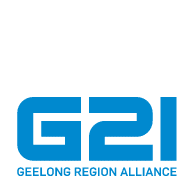At the time of writing, the G21 region has the highest rate of vaccination against COVID in Victoria. More than half the population over the age of 15 has had at least one dose and 30.3 per cent of the population is now fully vaccinated against the vicious virus.
In large part, we can thank our regional health services leaders who have moved quickly to put their vaccinations systems into top gear. Barwon Health led the state by developing its own booking platform CoVaxApp, which also reports on patient outcomes.
This innovation, shared widely within the region, is enabling up to 3000 jabs a day across G21. Outreach teams are working with charities to inoculate the homeless. Health services are working with employers to vaccinate and test workers on site. Communications in eight languages are being circulated to spur vaccination rates in hard-to-reach communities.
This is a serious campaign, and we are doing well, but there are many months and many more jabs to go before our region reaches a place of safety. We must maintain momentum.
It’s also worth looking back on how much we’ve achieved.
It’s been just over a year since Colac fell into the grip of Victoria’s biggest regional COVID outbreak. Fiona Brew had just arrived to take up her new role as Chief Executive of Colac Area Health and suddenly found herself in the midst of a full-blown health crisis.
“There were a heap of emotions – fear, and anger that despite the measures we took, we got COVID here. With so much happening in Melbourne, there was little awareness of how we were suffering. There was no manual, we were ahead of the directions and we had to step up on our own as a health service and community. The general concern was how to keep everyone safe, especially the vulnerable and people in aged care,” she says.
“I was also incredibly proud of the community – how we rallied, how people cared for each other, the small acts of kindness. Despite social distancing and mask-wearing, the caring and kindness were exemplary.”
The community of 13,000 pulled together, effectively locking itself down, relying on local leaders and its own clubs and networks to guide the community through the fear and confusion of those early days.
The ADF was deployed to support the enormous local effort and COVID was successfully chased out of town. This was achieved at a time when we knew very little about the virus, we were not used to lockdowns, contact tracing was poor, there were no systems properly in place and vaccines were a pipe dream. Colac held fast and came through the worst.
By the end of last year, we were looking forward to 2021, naively imagining we would be free of COVID and restrictions. But here we are again, Groundhog Day, right across the nation. Another winter, another strain, mandatory masks, more lockdowns and curfews. Bad news arriving by the truckload. The IPCC’s climate change update reminding us that inaction is a recipe for disaster; the Taliban returning to power, shutting down 20 years of progress for girls and women; the prospect of another mutation of COVID in 2022. The world feels grim.
The cumulative stress is taking its toll. Although some of these things are beyond our control, protection from the virus is within reach. Health chief Fiona Brew says it’s another critical moment in time for the community to band together and finish the job.
“Get vaccinated. And if you can’t get a jab in your local town, don’t use it as an excuse. You can go to the Ford factory, you can go to your GP. The only way to get through this is with increased vaccination rates. We need to be as creative and innovative as we were last year in overcoming the virus.”
She believes the sense of partnership, trust and strong communication that has been built up in our communities is driving the strong vaccine uptake.
“We can do it. We have cause for optimism and better times ahead in 2022. We’ve learned a lot in 18 months, this is a step in the journey, and we can work together to do it. Get vaccinated so we can get on with life.”












